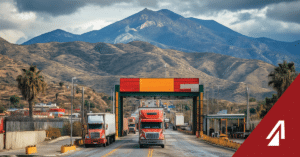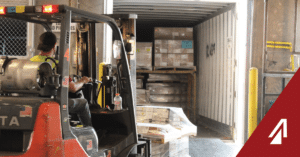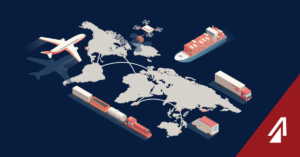Many companies, today, are falling behind with their logistics technology. They either try and save money to operate in-house or feel they can accomplish the same output as an outsourced option can. That is often not the case. Most companies either cannot afford or do not have access to the technology that many outsourced logistics options can provide; and as a result, they are further complicating their supply chains and costing themselves more money. To know for sure how your company fares, take a look at most companies’ logistics technology levels and see how they compare to an outsourced option, like a 3PL’s.
Shipment Scheduling
Most Companies: use devices like phone or email to contact a trucking company off a load board to move their freight. Some companies have established relationships with local carriers and can rely on them for shipments. Neither of these are perfect scenarios because companies often overpay for spot bid rates or are at the mercy of their local carrier’s capacity.
3PLs: allow companies access to a nationwide network of carriers. They offer multiple contact points, including phone or email, that are easy for shippers and customers to use. Most modern operations have internal systems like EDI, a TMS, or a mobile app that customers can request shipments with the touch of a button.
Shipment Management
Most Companies: follow up with their loads via phone, email, or fax once their loads are scheduled. Carriers and customers keep separate databases of their load schedules, times, pickup numbers, etc. Using this tech, it is difficult to reschedule or change load details. So, when changes are necessary, loads get more complicated and increase the likelihood for error.
3PLs: use sophisticated Transportation Management Systems (TMS) to manage and operate loads. These systems act as central hubs for customers, carriers, and 3PL agents to collaborate on loads and work with the same information. Customers can easily access their loads to make changes, review details, and check their loads’ statuses. Carriers receive accurate, up-to-date load tenders and complete loads effectively. 3PLs work together with both parties to make sure accurate information is flowing back and forth.
Tracking and Visibility
Most Companies: must rely on their dock workers to ensure the right freight was loaded on the right trucks. Then they wait for their carriers to report when a load is picked up or delivered and rely on periodic updates throughout the transit time. This information can often be delayed while customers anxiously await their load’s status. Some companies must rely on their own customers to confirm delivery; this can be embarrassing and bad for business.
3PLs: can track shipments down to the part number at any stage of the shipment, 24/7. The key is in a combination of scanning technology and tracking software. Many 3PLs use IoT scanning equipment on the docks or in warehouses to ensure the correct parts are picked and loaded on the correct truck. Then, once loads are in transit, they receive location updates both periodically and on request. 3PLs have access to proprietary tracking software through driver cell phones and truck GPS, as well as receive automatic updates from their carriers via EDI. Customers can have total visibility over their shipments throughout the entire process.
Shipment Follow-Up
Most Companies: use outmoded technology like email or fax to receive PODs and other information like billing documents. They must dispute assessorial charges with the carriers and rely on their internal data and data collected from the receiver to properly award the correct amounts. After the load is settled, the information is often stored on an internal server until it is needed again. These servers are prone to malicious attack and hardware corruption.
3PLs: often use modern, cloud-based, technology to send and receive information. It is safer from attack and allows for greater storage capacity. The technology itself is also more sophisticated and provides its users with a higher number of simpler options. Many allow carriers to scan or take pictures of their PODs directly on their smartphone and upload it to the TMS. Others utilize EDI and transmit documents quickly and securely. One of the newest developments in logistics is blockchain, and its effect on shipments. Blockchain allows for secure, definitive, electronic contracts that automatically track load data to ensure the terms are met. Customers do not need to dispute with their carriers because the information is plain, and the contract specifically outlines further steps. After completion, the load information is safely stored in the cloud so customers can easily access it later for auditing or review.
So, while it may seem practical to do things in-house, companies are often able to save on their supply chain by outsourcing to groups like 3PLs. They have technology and infrastructure that many companies do not have access to and can use it to their customers’ benefit. So, how does your logistics technology compare?
If you would like help with your logistics technology and infrastructure, call us today!



